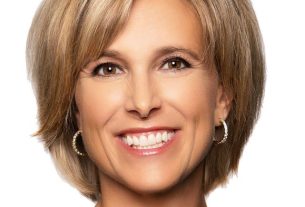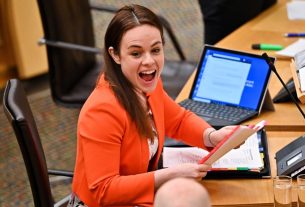You are unable to catch up on missed payments, experts say
Reviews and recommendations are unbiased and products are independently selected. Postmedia may earn an affiliate commission from purchases made through links on this page.
Article content
By Julie Cazzin with Brenda Hiscock
Advertisement 2
Article content
Q: Help. I borrowed $15,000 from my registered retirement savings plan (RRSP) under the Home Buyers’ Plan (HBP) and have missed three years’ worth of repayments. What should I do now? And what penalties will I have incurred, if any? – Robert
Article content
FP Answers: Robert, let’s look at how the HBP program works in general, and then address your question. The federal government’s plan allows you to use up to $35,000 of your RRSP savings ($70,000 for a couple) to help finance a down payment on a home for yourself or a related person with a disability. To be eligible for the program, you must meet the following criteria:
You must be considered a first-time homebuyer (you are considered a first-time homebuyer if, in the prior four-year period, you did not occupy a home that you owned, or one that your current spouse or common-law partner owned);
Advertisement 3
Article content
You must have a written agreement to buy or build a qualifying home;
You must be a resident of Canada when you withdraw funds from your RRSPs under the HBP and until a qualifying home is bought or built;
And you must intend to occupy the qualifying home as your principal place of residence within one year after buying or building it (additional criteria need to be met if the home is being built for a disabled person).
In all cases, if you have previously participated in the HBP, you may be able to do so again if your repayable HBP balance on Jan. 1 of the year of the withdrawal is zero and you meet all other HBP eligibility conditions.
Once you have determined that you qualify for the program, you can withdraw a single amount or make a series of withdrawals in the same calendar year. However, you cannot withdraw more than $35,000 per person/spouse.
Advertisement 4
Article content
Also, your RRSP contributions must remain in the RRSP for at least 90 days before you can withdraw them under the HBP, or they may not be deductible for any year. This is a very important point as some people mistakenly believe they can contribute to the RRSP, get the tax deduction and immediately withdraw the funds for the HBP. That is not the case.
To withdraw funds from your RRSPs under the HBP, fill out Form T1036, Home Buyers’ Plan (HBP) Request to Withdraw Funds from an RRSP. The withdrawal is not taxable if you repay it within a 15-year period. The payback amount is at least a 15th per year of the amount you withdrew from your RRSP.
Your repayment period starts the second year after the year you first withdrew funds from your RRSP for the HBP. For example, if you withdrew funds in 2022, your first year of repayment will be 2024.
Advertisement 5
Article content
Robert, you have missed three years of HBP repayments and are concerned about penalties. In this case, it’s simple. If you do not make the annual repayment to your RRSP, you must include it as RRSP income on your income tax return. The amount you include is the minimum amount you must repay as shown on your Home Buyers’ Plan statement of account. Your HBP balance will be reduced accordingly.
The “penalty” is extra taxable income on your return for the three years the repayments were not made. You are unable to catch up on missed payments.
In future years, Robert, there is no real benefit in making extra repayments beyond that required when you make your annual repayment, since you are better off claiming any extra contributions as deductions (yielding a tax refund) rather than paying down your HBP balance quicker.
Advertisement 6
Article content
-

FP Answers: Should I hold onto my large portfolio of preferred shares or diversify?
-

FP Answers: When should I add more GICs or bonds to my portfolio mix?
-

FP Answers: The Bank of Canada lost $522 million in three months — here’s why
If your RRSP deduction limit for the repayment year is zero, you can still contribute to your RRSP and designate the amount you contributed as a repayment under the HBP. These are not considered RRSP contributions. Therefore, you cannot claim a deduction for these amounts on your taxes.
For upcoming new homebuyers, it will be important to also consider the Tax-Free First Home Savings Account (FHSA). Starting in 2023, FHSAs will be available to Canadian residents who are 18 years old or older and have not owned a home in the year the account is opened or the preceding four calendar years.
Advertisement 7
Article content
The annual tax-deductible contribution limit will be $8,000, up to a lifetime contribution maximum of $40,000. Unused contribution room up to $8,000 can be carried forward, and the plan must be closed after 15 years.
Funds withdrawn to make a qualifying home purchase are not subject to tax. Any funds not used towards a home purchase can be transferred to an RRSP or registered retirement income fund (RRIF) penalty free and tax deferred, without impacting the taxpayer’s contribution room. Withdrawals for other purposes will be taxable.
The major difference between the two plans is that there is no requirement to repay the FHSA. But you can use the HBP and the FHSA program when you purchase your first home.
Brenda Hiscock is a fee-only, advice-only certified financial planner (CFP) at Objective Financial Partners Inc. in Toronto. She does not sell any financial products whatsoever. She can be reached at [email protected].
_____________________________________________________________
If you liked this story, sign up for more in the FP Investor newsletter.
_____________________________________________________________





